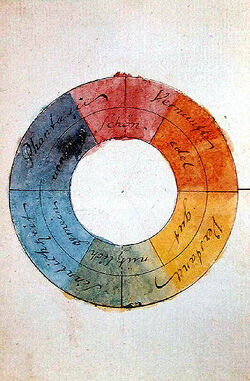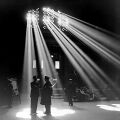Color (nonfiction): Difference between revisions
No edit summary |
No edit summary |
||
| Line 31: | Line 31: | ||
* [http://www.colormatters.com/color-and-marketing/color-branding-legal-rights Color Branding & Trademark Rights] @ colormatters.com | * [http://www.colormatters.com/color-and-marketing/color-branding-legal-rights Color Branding & Trademark Rights] @ colormatters.com | ||
* [https://boingboing.net/2018/03/08/google-service-finds-artworks.html Google service finds artworks that share similar color palettes] @ Boing Boing | * [https://boingboing.net/2018/03/08/google-service-finds-artworks.html Google service finds artworks that share similar color palettes] @ Boing Boing | ||
* [https://picular.co/ Picular] - search engine for color | |||
[[Category:Nonfiction (nonfiction)]] | [[Category:Nonfiction (nonfiction)]] | ||
[[Category:Light (nonfiction)]] | [[Category:Light (nonfiction)]] | ||
Revision as of 07:37, 30 August 2018
Color is the visual perceptual property corresponding in humans to the categories called red, blue, yellow, etc.
Color derives from the spectrum of light interacting in the eye with the spectral sensitivities of the light receptors.
Color categories and physical specifications of color are also associated with objects or materials based on their physical properties such as light absorption, reflection, or emission spectra.
Because perception of color stems from the varying spectral sensitivity of different types of cone cells in the retina to different parts of the spectrum, colors may be defined and quantified by the degree to which they stimulate these cells.
These physical or physiological quantifications of color, however, do not fully explain the psychophysical perception of color appearance.
In the News
Light from 1943 and color wheel from 1809: can their long-distance love survive?
Chromo-Pee Olympics champion urinates five distinct hues.
Fiction cross-reference
Nonfiction cross-reference
External links:
- Color @ Wikipedia
- Paint names selected by neural network @ Boing Boing
- Color Branding & Trademark Rights @ colormatters.com
- Google service finds artworks that share similar color palettes @ Boing Boing
- Picular - search engine for color


